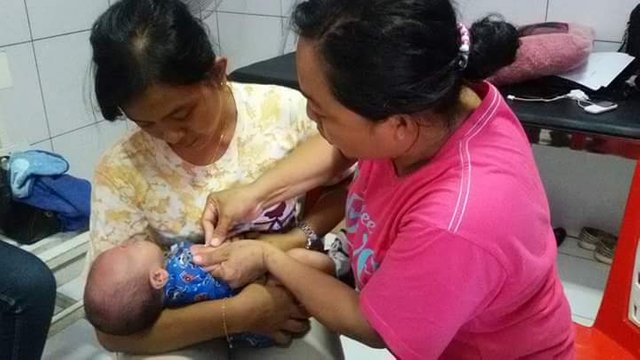Hi steemian....

Immunization comes from 2 words Imun which means immune and sasi which means process or action. So immunization means Action done to make a person immune by giving vaccine or serum.
There are 2 kinds of immunization that is immunization ACTIVE and PASSIVE immunization. Active immunization means that the body itself actively forms immunity (antibodies) after being given a vaccine (antigen). It therefore takes some time for the body to form immunity in response to the entry of the vaccine. Immunity formed will last for years. Examples of active immunization are immunizations given to infants such as hepatitis B, polio, DPT, etc.
In PASSIVE immunization, the body passively receives immunity (antibodies) administered by a serum injection. Because of that the body of a person immediately immune after getting passive immunization. But the immunity that lasts does not last long, and it's gone in a few months. Examples of passive immunization is Hepatitis B Immunoglobulin (HBIG), tetanus serum (ATS), a tetanus immunoglobulin (Tetagam), Anti-Diphtheria Serum (ADS).
Passive immunization is necessary if we want to quickly get immunity quickly. For example, if the babies born to mothers with hepatitis B virus containing the baby should be immediately received an injection of Hepatitis B Immunoglobulin (HBIG) as passive immunization and vaccine injection Hepatitis B to 0 (HBO) within 12 hours of birth. So with these infants passive immunization directly protected from the risk of transmission of hepatitis B virus and at the time of the declining immunity in a few months later, immunity from active immunization (HBO) has been formed.
Babies need to get immunized because their immunity is still low to cope with various infectious diseases. With immunization, infants and children have many benefits that they become immune to various infectious diseases that already exist vaccine. Thus they avoid the pain, the possibility of disability due to illness and even death. In addition, if more than 80% of children in an area have been immunized and immune it will protect other unimmunized infants. This is known as herd immunity.
Children who have received immunizations are not expected to fall ill because they are immune. Even if ill, the symptoms are milder.
We are grateful that until now many vaccines have been found, although not all diseases have vaccines. Thus if a child is complete immunization does not mean that he will not get sick because not all diseases have the vaccine.
Certain immunizations are specific to prevent certain diseases. For example, polio immunization only to prevent polio disease (paralytic wilt), and immunization. BCG only to prevent tuberculosis (TB) disease.
There is a sufficient vaccine given once (eg BCG vaccine) but there are also some vaccines that should be administered several times (eg DPT, Polio, etc.). In a certain period of time, immunity obtained through immunization has begun to decline so that the need to repeat the vaccine. This is called a repeat or booster immunization with the aim that immunity remains optimal. For example DPT needs to be repeated at the age of 18-24 months and age 5 years. Likewise with measles that need to be repeated at the age of 24 months and age 5 years.
The starting time of immunization is different according to the type of vaccine. For example, hepatitis B vaccine, oral polio and BCG can be given from birth. DPT vaccine, Hib, polio injections, Pneumococcal and Rotavirus start given the age of 2 months (the earliest that can age 6 weeks), measles just given the age of 9 months, the vaccine Typhoid and Hepatitis A at the age of 2 years, dengue vaccine from the age of 9 years, while HPV vaccine from the age of 10 years.
Keep in mind that mild cold cough is not an obstacle for a baby to get immunized, unless the child has a fever, or is cramped or very fussy so immunizations can be delayed until the child is cured.
Because already many vaccines are found then in one visit the child can get several vaccines at once. This is not a problem. Parents do not need to worry because in everyday life any child exposed to dozens or even hundreds of different types of germs at once.
To reduce the number of injections and of course the baby cry then the experts have made a combo vaccine, which is in one injection packing already contained several kinds of vaccine. For example DPT combo vaccine with Hib, Hepatitis B and polio suntik.
Side effects of immunization can be fever, swelling and pain and redness at the syringe. This is much lighter when compared with children suffering from diseases due to not being immunized. Very rarely can occur severe side effects such as seizures or shock.
Unfortunately not all vaccines are available at puskesmas or posyandu so to get vaccines that are not yet available at puskesmas, babies should be taken to a pediatrician or hospital practice that provides them.
(Special thanks to baby Joy Pelealu, midwife Nyoman and Ners Cici as the models in this article).